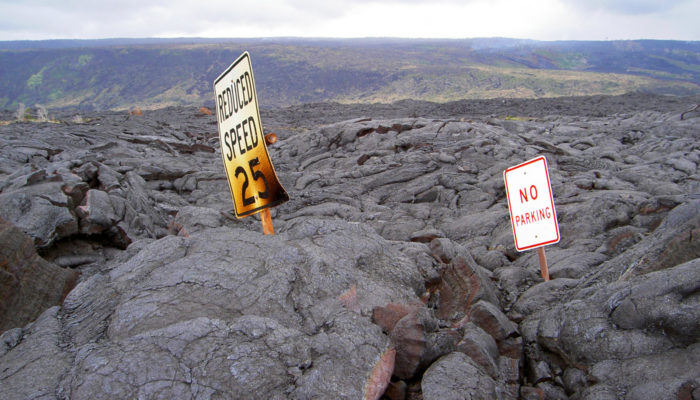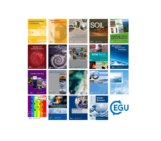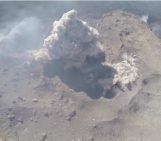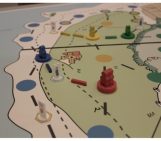
The Sendai Framework for Disaster Risk Reduction 2015-2030 is a set of agreed commitments for member states of the United Nations to act on the prevention of ‘new’ disasters and reduce existing disaster risk through the implementation of integrated and inclusive economic, structural, legal, social, health, cultural, educational, environmental, technological, political and institutional measures. They also seek to address issues that prevent and reduce hazard exposure and vulnerability to disasters, and increase preparedness for response and recovery, thereby strengthening resilience. The United Nations Office for Disaster Risk Reduction (UNDRR), is tasked to support the implementation, follow-up, and review of the Framework for member states.
It is a successor of the Hyogo Framework for Action 2005-2015, and the Sendai Framework compliments other 2030 agenda agreements including: The Paris Agreement on Climate Change, The Addis Ababa Action Agenda on Financing for Development, the New Urban Agenda and the Sustainable Development Goals.
The framework has a large scope, encompassing many different natural and anthropogenic hazard processes that can turn into disasters, including frequent/infrequent, small to large scale, sudden and slow-onset, environmental, technological, and biological hazards, and various associated risks. The Framework aims to guide the multi-hazard management of disaster risk in development at all levels as well as within and across all sectors. There are seven main goals:

The Sendai Framework’s seven global targets (UNDRR 2020)
- Substantially reduce global disaster mortality by 2030, aiming to lower average per 100,000 global morality between 2020-2030 compared to 2005-2015.
- Substantially reduce the number of affected people globally by 2030, aiming to lower the average global figure per 100,000 between 2020-2030 compared to 2005-2015.
- Substantially reduce disaster damage to critical infrastructure and disruption of basic services, among them health and educational facilities, including through developing their resilience by 2030.
- Substantially reduce disaster damage to critical infrastructure and disruption of basic services, among them health and educational facilities, including through developing their resilience by 2030.
- Substantially increase the number of countries with national and local disaster risk reduction strategies by 2020.
- Substantially enhance international cooperation to developing countries through adequate and sustainable support to completement their national actions for implementation of this framework by 2030.
- Substantially increase the availability of and access to multi-hazard early warning systems and disaster risk information and assessments to people by 2030.
State of progress, five-years in
But what is the state of progress of the framework, five years in? All countries, due to their differing societal systems and hazards, have taken different approaches to the Framework, but one thing all countries need is better data.
What are the successes and potential challenges that may hinder progress? For Africa, all states have signed the framework, committed to making progress as disasters have a significant impact on people, their livelihoods and infrastructure. Researchers say that whilst progress is being made, better data and information management is needed and that governments need to translate limitations connected with the targets into community-based actions in capacity/resilience building. For example, whilst there has been a significant decrease (39 %) of people affected by disasters from 2015-2016 to 2017-2018 across the whole continent of Africa, there was an overall increase of 13 % in reported deaths in the same time period. Many of these deaths across the continent occurred due to anthropogenic hazards (transportation and industrial disasters), biological (cholera and ebola outbreaks) and hydrometeorological events.
Data collection is an important part of the process in identifying the state of progress towards the seven goals and to identify emerging areas to tackle. For disasters, many countries collect mainly loss and damage data, more of the “negative” impacts, and don’t pick up on the “positive” aspects such as examples of social networks being utilised. Although, it could be argued that these more social and “hidden” responses to disasters are harder to quantify and capture in a dataset. Baseline data and targets per country following the methodology set by the Framework can help build a statistical model to help set country-level targets. For example to achieve all seven goals of the Sendai Framework, Canada would need to prevent 88 hazard events from becoming disasters, keep the fatality rate from disasters at zero, avoid 4,700 disaster-related injuries, prevent 556,000 people from being evacuated, avoid US$92 billion in losses and protect critical infrastructure from disruption. As is clear from these numbers, this would be a huge undertaking that would require collective responsibility across all parts of society.
As disasters can differ from one to the next depending on the changes brought on by society, intersecting with vulnerability, risk and resilience, the data provided within 10 years could be insufficient for providing a broad picture of disasters and risk measures across a whole country. In this case, it is important to gain a deep historical record of disasters, as this can help the dataset. Sweden’s national strategy for example, requires in-depth learning after each new disaster and use the experiences to alleviate weaknesses in systems. While this is important in transforming systems and being better prepared for the next disaster, the relevance of data from disasters re-occurring on longer time scales are limited.
What next?
It is difficult to say what the next 5 years will bring. Disasters depend greatly on so many intersecting facets of society of culture, socioeconomic, political, environmental, and developmental factors. The world is currently within a pandemic, as well as experiencing other natural hazard processes, where politics, leadership, and decision-making regarding prioritising risks, are all critical, but fluctuate depending on the country. To truly progress, more research and data collection needs to happen across all parts of society at the local to national levels. But that does of course, depend on the resources (including researchers) made available for each country to help drive a nation’s agenda in trying to meet the seven goals of the Sendai Framework. We must all work on our unique challenges, together to make impactful and meaningful change to meet the Framework’s goals.




